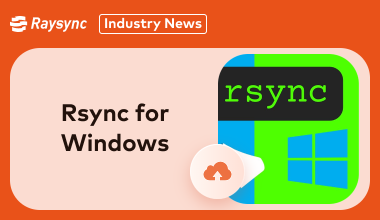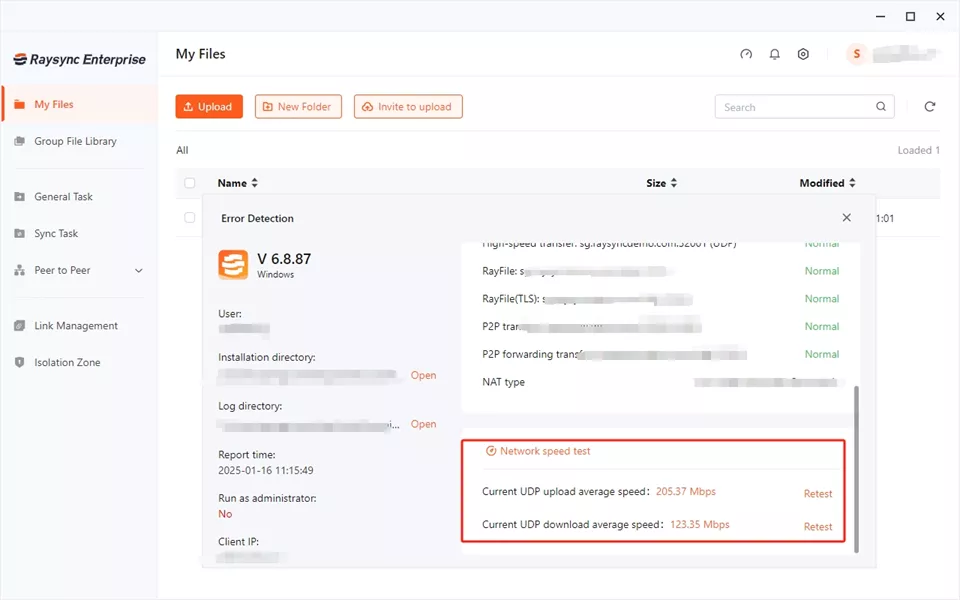Question: Is Rsync for Windows Available in 2025
February 7, 2025Rsync is a fantastic tool for keeping files in sync, but many Windows users have asked: Is Rsync for Windows Available in 2025?
Let's take a look at what the situation is today, exploring whether Rsync is directly available and what other options Windows users might consider.

What Is Rsync
Rsync (remote sync) is a powerful and versatile command-line tool used for synchronizing files and directories between two locations. These locations can be on the same computer, or between different computers over a network.
Here's what makes Rsync so useful:
Efficiency: Rsync uses a special algorithm that minimizes the amount of data transferred. It only copies the changes between files, rather than the entire file, making it very efficient for large transfers or frequent updates.
Versatility: Rsync can be used for a variety of tasks, including:
- Backing up files and directories
- Mirroring websites or data repositories
- Synchronizing files between computers
- Copying files between different storage devices
Flexibility: Rsync offers a wide range of options to customize its behavior, allowing you to control how files are transferred, which files are included or excluded, and more.
Open Source: Rsync is free and open-source software, making it a popular choice for many users.
Question: Is Rsync for Windows Available in 2025
The short answer is: Yes, Rsync for Windows is available in 2025.
However, it's not as simple as downloading a straightforward installer like you might on Linux or macOS. Here's why:
- Rsync's Origins: Rsync was originally designed for Unix-like operating systems. This means it relies on certain system functionalities that Windows doesn't inherently have.
So, how do you get Rsync on Windows?
There are a few common approaches:
- Cygwin: This provides a Unix-like environment within Windows, allowing you to run Rsync and other command-line tools. It's a popular solution, but it does add another layer to your system.
- MSYS2: Similar to Cygwin, MSYS2 offers a Unix-like environment. It's often considered a lighter-weight option.
- WSL (Windows Subsystem for Linux): If you're running a recent version of Windows, you can use WSL to install a Linux distribution (like Ubuntu) and then install Rsync within that environment. This allows you to run Rsync natively within Windows, but you'll be interacting with a Linux environment.
- Third-party tools: There are some Windows-specific tools that incorporate Rsync functionality, sometimes with a graphical interface. DeltaCopy is one example.
How to Install Rsync on Windows
Installing Rsync on Windows 11 is a simple process.
Here’s how you can install Rsync Windows:
- Download cwRsync: Head to the official cwRsync website and download the installer.
- Run the Installer: Follow the installation prompts to set up cwRsync on your system.
- Configure Environment Variables: Add the cwRsync installation directory to your system’s PATH. This allows you to run Rsync commands from any command prompt.
- Verify Installation: Open a command prompt, type rsync --version, and press Enter. If installed correctly, you’ll see the Rsync version.
- Alternatively, you can use Windows Subsystem for Linux:
- Enable WSL: Go to Settings > Apps > Optional Features > Enable Windows Subsystem for Linux.
- Install a Linux Distribution: Download a distribution like Ubuntu from the Microsoft Store.
- Install Rsync: Open the Linux terminal and run sudo apt install rsync.
And that’s it! You are all ready to use Rsync Windows 11.
Rsync for Windows Alternative for Business Use - Raysync
For businesses seeking a robust and efficient file transfer solution on Windows, Rsync, while powerful, can present certain complexities.

Raysync offers a compelling alternative designed specifically for business use, addressing the needs of secure, high-speed, and managed file transfers within a Windows environment.
This section will explore Raysync's features and benefits as a potential replacement for Rsync in business settings.
Pros:
- High-Speed Transfers: Leverages UDP-based transmission for unparalleled file transfer speed.
- User-Friendly Interface: Intuitive design eliminates the complexity often associated with Rsync.
- Enterprise-Grade Security: Advanced encryption protocols ensure your data stays secure.
- Scalability: Offers plans that grow with your business, catering to SMBs and enterprises alike.
- Cross-Platform Compatibility: Supports seamless file sharing across diverse operating systems.
Con:
- Initial Cost: The pricing may seem higher compared to free tools like Rsync, but the features and ease of use justify the investment.
Pricing Model of this product: Raysync offers custom enterprise-level plans as per the requirement of the business.
Final Words
While Rsync is technically available on Windows through various methods, it often requires technical expertise. Raysync provides a user-friendly, high-speed, and secure alternative tailored for businesses. Though it comes with a cost, its features and cross-platform compatibility make it a compelling option for streamlined file transfers.
You might also like

Industry news
October 31, 2024Discover how to send files securely: Learn methods for personal and business use, upload files securely, and explore high-security tools like Raysync to protect your data.

Industry news
April 17, 2025Looking for the best way to transfer large files over Internet in 2025? Explore top methods for individuals and businesses, including cloud storage, file transfer services, and P2P tools.

Industry news
October 23, 2024Explore the top ftp clients featuring advanced capabilities, robust security, and optimal performance across all platforms.